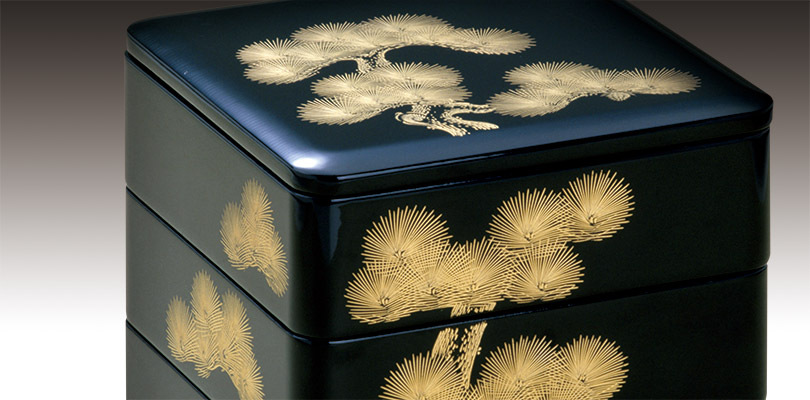Pursuit of Thinness
Gold leaves are used in art, crafts and architectural objects the world over. Made in Japan’s gold leaves are highly praised for its extreme thinness and beautiful luster. This high-quality gold leaves were made possible through the manual dexterity and perseverance that is common to Japanese artisans.
In Pursuit of the Ultimate Thinness

Kinkakuji, or the golden temple, has its entire body coated in gold leaf.
The history of gold leaves are very old. They are said to have been produced in Egypt during the period before Christ (B.C.). It then expanded worldwide, and it is recorded as have been used in Buddhist images in Japan 1,200 years ago.The thickness of gold leaves produced in Japan is approximately 1/10,000 mm.
This is the limit of thickness at which a shape can be maintained. It is stretched by being beaten approximately 50,000 times, which allows 2 grams of gold to produce about 1.65 m2 of gold leaf. Most of the gold leaves produced overseas is 10 to 20% thicker compared to Japan’s.
Some countries also do not produce stable quality, and gold leaves are sometimes sold with holes and an irregular thickness.
Japan’s Spirit of Craftsmanship Does Not Compromise with Beauty
One might ask why so much efforts are put in to make the gold leaves so thin. The reason is that, the thinner they become, the more brilliantly they shine. Thick gold leaves, like those produced overseas, has a dull luster.
In order to achieve the inherent beauty of the gold, with its expressive reflection of light, gold artisans aim for the ultimate in thinness. Also, thin gold leaves more closely adhere to the fine patterns of the material on which it is attached.

Here, gold leaves were used to beautifully decorate these boxes.
Thin, pliant gold leaves precisely express the details of intricate Japanese crafts and sculptures. Gold leaves with the ultimate thinness were produced because Japanese artisans refuse to compromise with beauty.
They find joy in polishing their skills to the utmost degree, and discovering new and better techniques. It is precisely because of this "spirit of craftsmanship" that the world's highest-quality gold leaves are produced.
Gold Leaf Reflects the Japanese Culture
The gold leaves produced by the Japanese craftsmanship has been used in the architecture and crafts that represent Japan. Kinkaku-ji, the temple in which 200,000 gold leaves were used, is a symbol of Japan and Kyoto that is visited each year by many people from both Japan and overseas.
The brilliance of gold leaves are found in the intricate handyworks of the lacquer, a traditional craft loved by Japanese since ancient times. In this way, the gold leaf was born and continues to evolve with the culture of Japan's craftsmanship and its brilliance will continue to express the beauty of Japan.
The Japanese culture has well been acquainted with things on a micro level. But would you believe they have gone microscopic?




